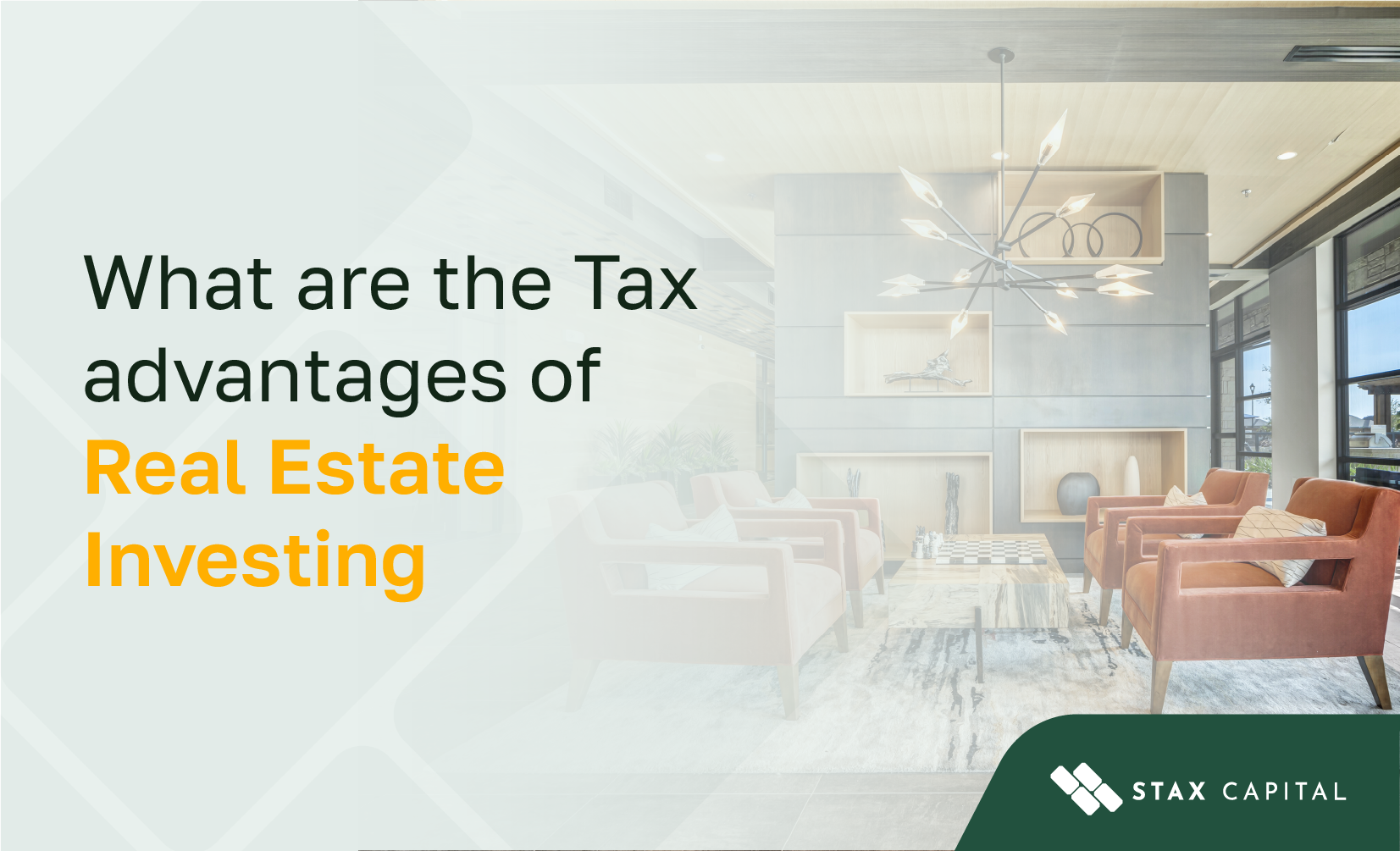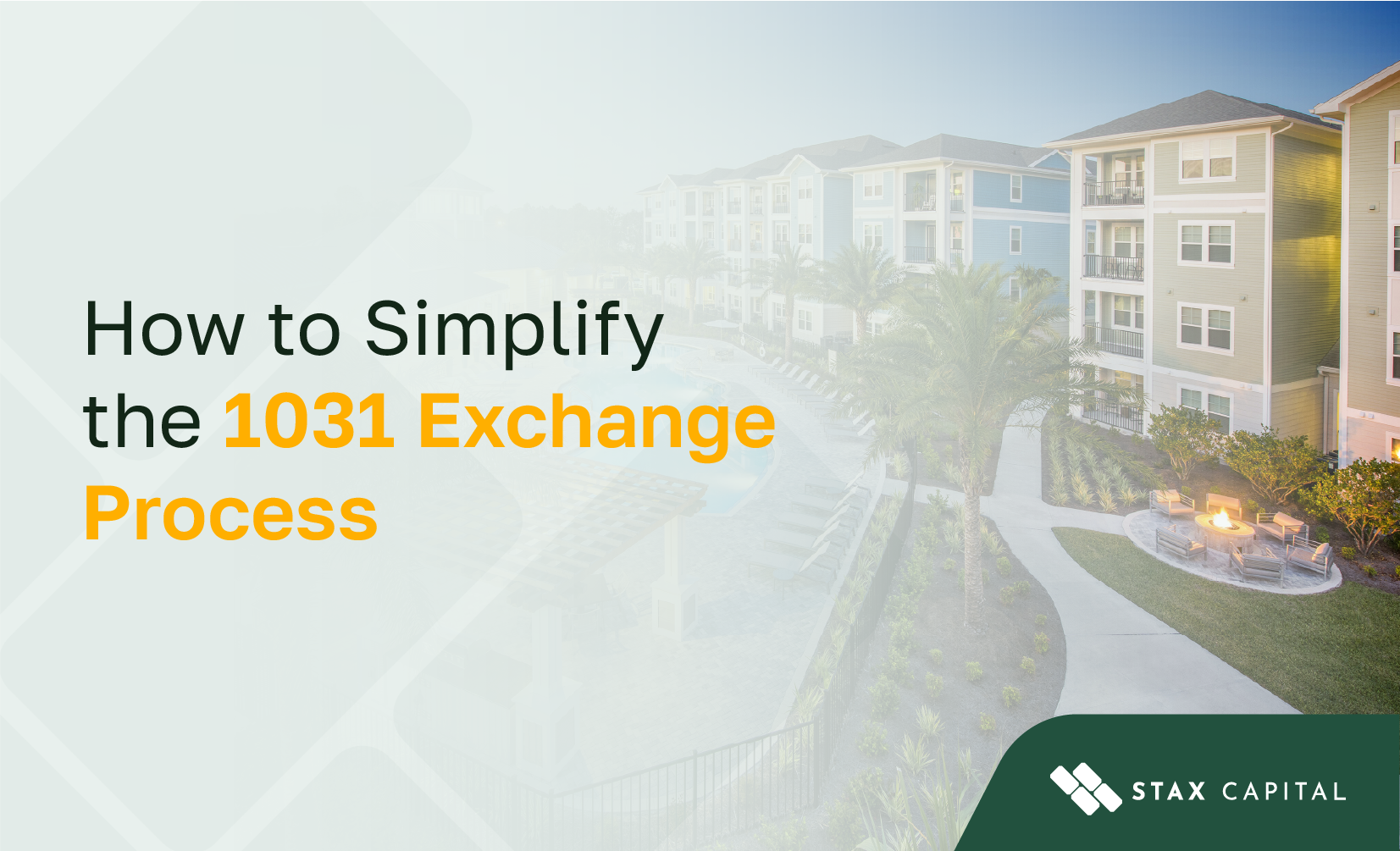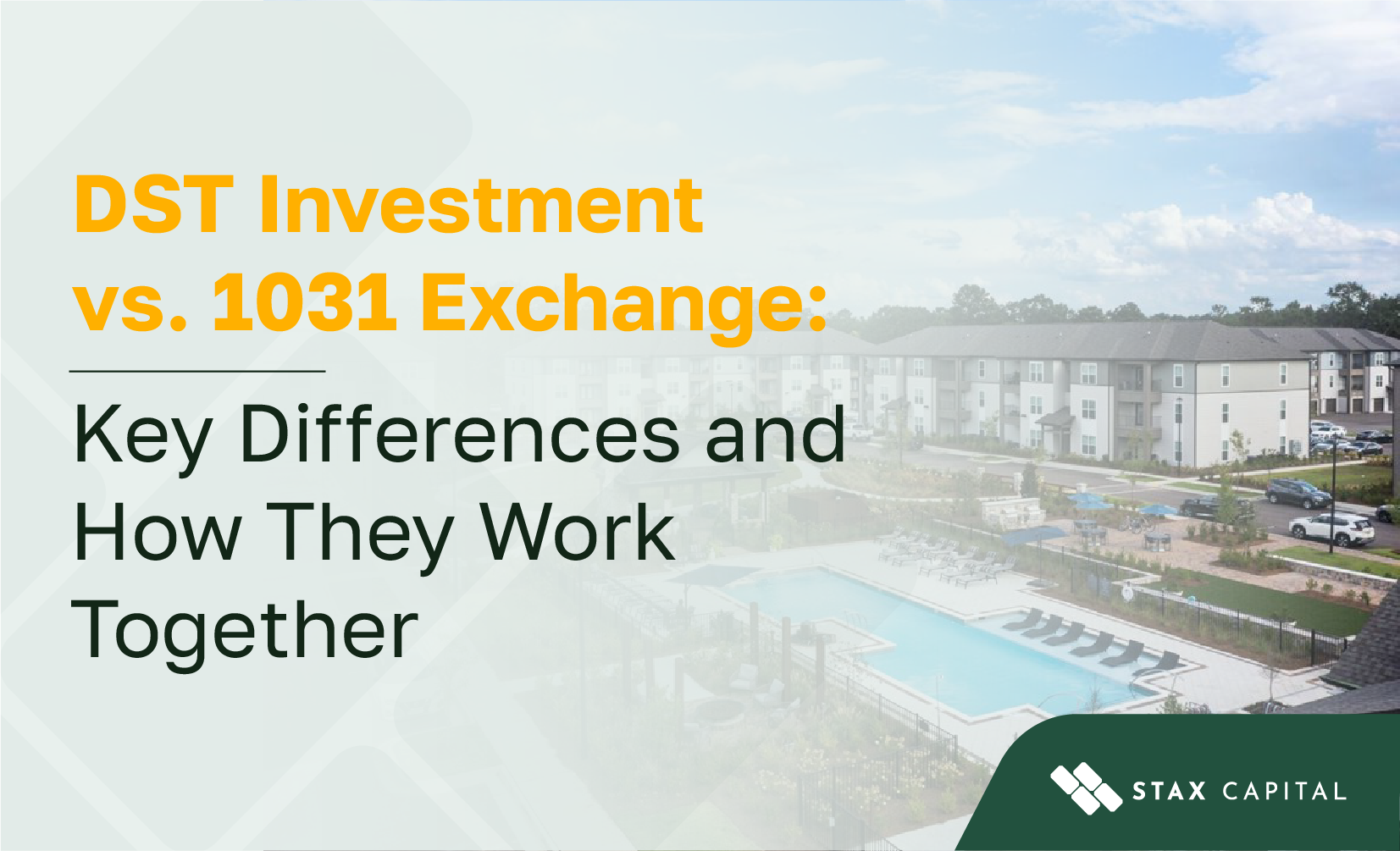Top Benefits of a 1031 Exchange: How to Maximize Your Real Estate Returns

What if you could upgrade your investment property and avoid paying taxes on the profit? That’s exactly what a 1031 exchange allows real estate investors to do.
A 1031 exchange allows eligible investors to defer capital gains taxes by reinvesting proceeds into a qualifying replacement property, provided IRS rules and deadlines are met. This tax strategy may help investors reinvest more capital, potentially acquiring larger or higher-value assets. However, real estate investments carry risks, and past performance is not indicative of future results.
Let’s explore the benefits of 1031 exchanges and how they help real estate investors to defer capital gains, improve cash flow, and expand property holdings.
Key Benefits of a 1031 Exchange
Here’s a detailed look at the key benefits of a 1031 exchange and why it’s a smart move for building your real estate portfolio.
Tax Deferral
One of the most valuable benefits of a 1031 exchange is the ability to defer capital gains taxes. When you sell a property, any profit is typically subject to capital gains tax, which can significantly reduce your take-home amount. However, with a 1031 exchange, those taxes are deferred as long as you reinvest the proceeds into a qualifying property.
By deferring these taxes, you can put the full amount of your sale proceeds to work. This means more money for your next investment, allowing you to purchase a larger or higher-performing property. The tax deferral remains in effect as long as IRS exchange rules are met and reinvestments continue. However, taxes will apply if the investor eventually sells without reinvesting in a qualifying property.
Portfolio Growth and Diversification
A 1031 exchange can help real estate investors diversify. The exchange allows you to defer capital gains while moving into different commercial real estate or residential properties. Instead of holding onto a single property, you can use the exchange to spread your investments across different types of properties or markets.
Diversification reduces your exposure to risk. If one property or market underperforms, other assets in your portfolio can balance out the losses. By moving from one asset type to another—like from a single-family rental to a multifamily property—you create a more diversified investment portfolio. However, diversification does not eliminate risk, and market conditions can impact investment performance.
You can also scale up. Selling a smaller property and combining the proceeds into a larger, more valuable asset can boost long-term returns and create new opportunities for passive income.
Increased Cash Flow
A well-executed 1031 exchange may provide opportunities to improve cash flow if the replacement property generates higher income. However, income is not guaranteed and depends on factors such as market conditions, tenant occupancy, and management costs.
By reinvesting in a property with a higher rental yield or better market conditions, you can generate more income from your investment. More rental income means you have extra money to cover maintenance costs, property management fees, and other expenses. Increased cash flow also gives you the flexibility to reinvest in more properties or diversify into new markets, strengthening your financial position.
Additionally, upgrading to a property with fewer vacancies or lower maintenance costs can improve cash flow even more. The ability to increase rental income while deferring taxes makes a 1031 exchange a powerful tool for maximizing cash flow.
Set Up a Stepped-Up Cost Basis at Death
The goal of a 1031 exchange isn’t just to defer the capital gains tax—it’s also a powerful wealth preservation tool. If an investor holds a property in a 1031 exchange until passing, their heirs receive a stepped-up cost basis, potentially reducing or eliminating gains tax on the sale of the inherited property. However, estate tax laws and individual tax situations may impact the overall tax outcome.
This means that the property’s value will be reset to its market value at the time of your death. If your heirs decide to sell the property, they would only owe capital gains taxes on any appreciation that happens after the step-up. In many cases, this strategy allows your heirs to avoid paying capital gains taxes altogether.
This benefit helps preserve generational wealth and allows you to pass on a stronger financial foundation to your heirs.
Increased Purchasing Power
A 1031 exchange allows investors to defer taxes and reinvest more capital into the replacement property. Rather than losing 20-30% of your gains to taxes, you can apply that capital to exchange properties of higher value.
With this extra buying power, you can also secure better loan terms. This helps you scale your portfolio faster and take advantage of larger, more valuable assets without the immediate tax hit.
Reset Property Depreciation
By using the 1031 provision to swap into a new property, investors can reset depreciation schedules and optimize tax return deductions. This strategy allows for additional tax benefits, reducing taxable rental income while maintaining compliance with IRC Section 1031.
Once you complete a 1031 exchange, you start a new depreciation schedule based on the value of the replacement property. This creates new opportunities for tax savings and helps offset rental income, improving your overall cash flow. However, IRS depreciation rules apply, and investors should consult a tax advisor to understand specific tax implications.
For long-term investors, resetting depreciation is a smart way to maximize annual tax benefits and improve cash flow.
Reduced Management Burden
Many real estate investors transition from high-maintenance properties into commercial real estate investments with professional management. This deferred exchange strategy allows for a more passive investment approach while still benefiting from rental income.
If you’re looking to exchange an apartment building for a fully managed investment property, a 1031 exchange may provide an opportunity to transition from active property management to a more passive investment approach, such as Delaware Statutory Trusts (DSTs). However, investors should consider management costs and ongoing responsibilities before making a decision.
How to Leverage a 1031 Exchange Effectively
A 1031 exchange is a powerful tool for building wealth through real estate. But to make the most of it, you need to understand the process and follow the exchange rules carefully. Successful execution requires the right strategy, good timing, and expert guidance. Here’s how to qualify for a 1031 exchange while ensuring compliance with IRS rules:
Work with a Qualified Intermediary (QI)
A qualified intermediary (QI) plays a critical role in a 1031 exchange. The IRS requires you to use a QI to handle the transaction—if you receive the sale proceeds directly, the exchange becomes invalid, and you’ll owe capital gains taxes.
Why a Qualified Intermediary Matters:
- Ensures Compliance: A QI helps you follow the strict IRS guidelines for a 1031 exchange. They make sure all the paperwork is filed correctly and on time.
- Holds the Sale Proceeds: The QI receives and holds the funds from the sale of your property, preventing you from taking possession of them.
- Facilitates the Exchange: Once you identify a replacement property, the QI will transfer the funds to the seller to complete the exchange.
Choosing the right QI is essential. Look for a licensed professional with experience handling 1031 exchanges. They should be able to explain the process clearly, manage the funds securely, and offer guidance on selecting suitable replacement properties.
Plan for the 45-Day and 180-Day Deadlines
Timing is everything in a 1031 exchange. The IRS sets strict 1031 exchange deadlines that must be followed to maintain tax-deferral benefits:
45-Day Identification Period
Once you sell your property, you have 45 days to identify potential replacement properties. This includes weekends and holidays, and the clock starts ticking the day after the sale closes. You must provide a written list of up to three properties (or more, depending on their value) to your QI within this period.
180-Day Closing Period
You have 180 days from the sale date of your relinquished property to close on your replacement property. This includes the 45-day identification period, leaving you about 135 days after the identification period to finalize the purchase.
Research and Select Properties that Align with Long-Term Goals
Choosing the right replacement property is crucial to maximizing the value of your 1031 exchange. It’s not just about deferring taxes—it’s about improving your overall investment strategy.
Here’s how to select the best properties:
Evaluate Market Conditions
Research the local market where you’re considering investing. Look at factors like population growth, job market stability, rental demand, and property appreciation trends. Investing in an expanding market may provide opportunities for long-term value growth and cash flow. However, real estate market conditions can change, and past performance is not a guarantee of future results.
Focus on Cash Flow and Yield
When selecting replacement properties, investors should consider rental income potential, location, and long-term market trends. Each investor’s goals and risk tolerance should guide property selection. Compare rental yields, tenant occupancy rates, and maintenance costs to estimate your net income. Higher cash flow improves your financial flexibility and helps cover property expenses.
Account for Property Condition and Future Expenses
Inspect the property thoroughly to understand its condition. Factor in future repair costs and potential upgrades when calculating the expected return on investment.
Align with Your Investment Goals
Are you seeking higher cash flow, long-term appreciation, or a more stable income stream? Your replacement property should reflect your broader financial goals and risk tolerance.
Leverage a 1031 Exchange to Build Long-Term Wealth
A 1031 exchange isn’t just about saving on taxes—it’s a smart way to build long-term wealth. It helps you increase cash flow and strengthen your investment portfolio.
By working with experienced professionals, managing timelines carefully, and choosing the right properties, you can maximize the benefits of a 1031 exchange.
Thinking about a 1031 exchange? Contact us now to map out a strategy that aligns with your financial goals.



Share: